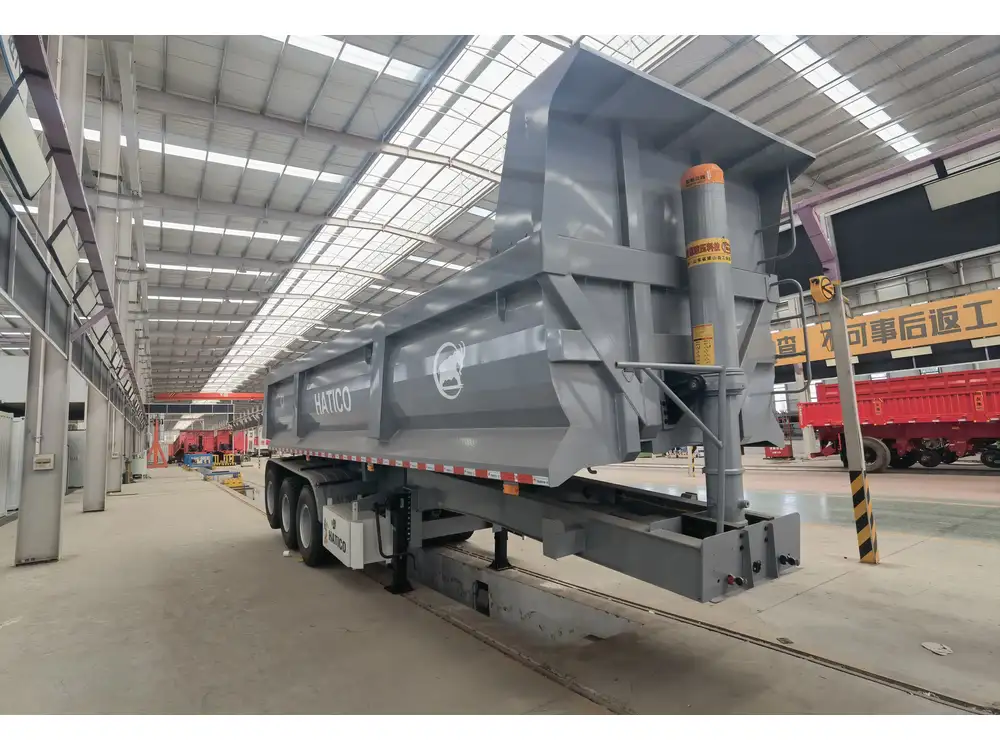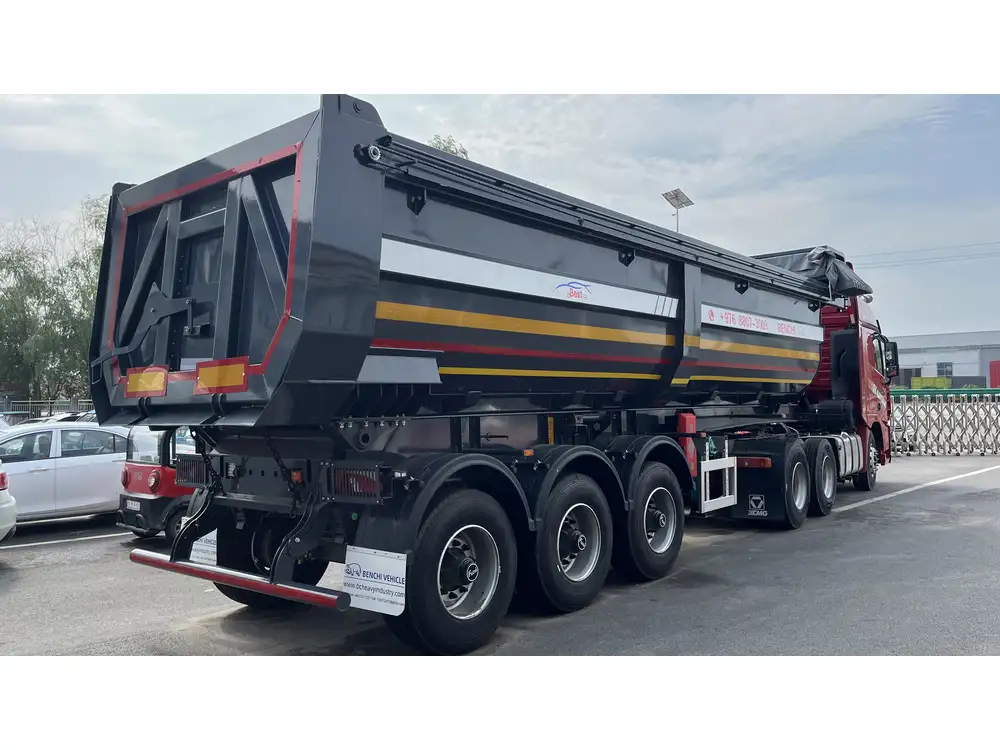When delving into the world of dump trailers, notably the commonly sought-after 5×8 models, understanding the weight can be pivotal for various applications, from landscaping to construction. The weight not only influences towing capabilities but also impacts the overall usability and efficiency in transporting materials. This article aims to provide a detailed breakdown of how much a 5×8 dump trailer weighs, the factors that influence its weight, and important considerations for potential owners or users of such equipment.
What is a 5×8 Dump Trailer?
A 5×8 dump trailer is a versatile piece of equipment designed to facilitate the transport of materials such as dirt, gravel, mulch, and debris. The “5×8” refers to the interior dimensions of the trailer’s bed, which measures five feet wide and eight feet long. This size is particularly popular among contractors and homeowners who need a compact yet powerful solution for hauling materials without the heft and maneuverability challenges posed by larger trailers.
Composition and Materials
The weight of a dump trailer can significantly vary based on its construction materials. The two predominant materials used in manufacturing 5×8 dump trailers are:
Steel: Known for durability, steel dump trailers are heavier but offer robust support and longevity. Typical weight ranges for steel trailers can be between 1,500 to 2,000 pounds.
Aluminum: While aluminum trailers tend to weigh less, generally from 1,000 to 1,500 pounds, they may not provide the same strength as their steel counterparts, especially under heavy loads. Nevertheless, aluminum offers corrosion resistance and is often favored for applications where weight savings are critical.

Weight Capacities
Another essential aspect that complements the weight of the trailer itself is its payload capacity. Payload capacity is the maximum weight a trailer can safely carry. For a 5×8 dump trailer, this capacity typically ranges from:
- Steel: 3,000 to 4,000 pounds
- Aluminum: 2,500 to 3,500 pounds
These limits are essential to consider, as exceeding them can lead to hazardous towing conditions, increased wear on your vehicle, and potential legal ramifications.
Factors Influencing the Weight of a 5×8 Dump Trailer
1. Construction Type
As previously noted, the choice of material—steel versus aluminum—significantly affects the overall weight of the trailer. Additionally, trailers designed with reinforced frames or heavy-duty axles may also weigh more, which could be a consideration based on anticipated usage.

2. Features and Add-Ons
Many dump trailers come equipped with various features and enhancements that can affect weight:
- Hydraulic Systems: Essential for tipping mechanisms, hydraulic systems add weight but are crucial for functionality.
- Tires and Axles: The type and size of tires and axles used on the trailer can further contribute to the overall weight. Heavier-duty tires may offer more durability but will increase weight.
3. Accessories and Modifications
Custom modifications such as side extensions, additional storage options, or safety enhancements can significantly alter the weight of a trailer. It’s essential to account for these changes in the weight calculations.
4. Design and Layout
The overall design—including the shape, frame structure, and any built-in compartments—also plays a role. More complex designs often result in a heavier unit.

Average Weight of a 5×8 Dump Trailer
To provide you with a clear understanding, we outline a simple table below summarizing the average weights:
| Material | Weight Range | Payload Capacity |
|---|---|---|
| Steel | 1,500 – 2,000 lbs | 3,000 – 4,000 lbs |
| Aluminum | 1,000 – 1,500 lbs | 2,500 – 3,500 lbs |
Importance of Knowing the Weight
Towing Considerations
When selecting a 5×8 dump trailer, it is critical to consider your towing vehicle’s capacity, which typically includes the following factors:
- Towing Limit: Ensure that your vehicle’s towing capacity exceeds the combined weight of the trailer and payload.
- Hitch Rating: Use a properly rated hitch that can handle the weight of the trailer and materials.
- Braking Power: Heavier loads require stronger braking systems to maintain safe operations.

Efficiency in Operations
Understanding the weight will also guide efficient operations. Knowing the limits allows users to optimize their loads without risking equipment or materials.
Legal Compliance
Regulations may govern the maximum allowable weight a vehicle and trailer combination can legally operate on roads. Being informed about your trailer’s weight is vital to ensure compliance with local and federal regulations.
Common Applications for 5×8 Dump Trailers
5×8 dump trailers serve multiple functions across various industries:
- Landscaping: Ideal for transporting soil, mulch, plants, and other landscaping materials.
- Construction: Efficient for moving heavy debris, tools, and materials to and from job sites.
- Home Improvement Projects: Useful for DIY enthusiasts handling renovation waste, gravel, and other materials.
- Event Setup: Suitable for transporting necessary materials for events and gatherings.

Comparing 5×8 Dump Trailers with Alternative Sizes
To appreciate the unique features of a 5×8 dump trailer, a comparative analysis can provide insight into how it measures up against others in the market.
| Trailer Size | Weight Range | Payload Capacity | Typical Use |
|---|---|---|---|
| 4×6 | 800 – 1,200 lbs | 1,500 – 2,000 lbs | Light materials, small projects |
| 5×8 | 1,000 – 2,000 lbs | 2,500 – 4,000 lbs | Versatile for general hauling |
| 6×10 | 1,500 – 2,500 lbs | 3,500 – 5,000 lbs | Heavy-duty applications, larger loads |
| 7×14 | 2,000 – 3,000 lbs | 5,000 – 7,000 lbs | Commercial use, extensive projects |
Tailoring Choices to Needs
Choosing the right size trailer comes down to understanding your specific requirements. For instance, while a 5×8 trailer provides a balanced approach for most medium-sized work, larger trailers may be necessary for heavier needs, while smaller options cater to lighter projects.
Maintenance Tips to Consider
Understanding the weight of your 5×8 dump trailer is just the beginning. Proper ongoing maintenance plays a fundamental role in ensuring longevity and safety. Here are some maintenance pointers:
Regular Weight Checks: Periodically check your payload against the trailer’s weight limit.
Tire Monitoring: Inspect tires for wear and ensure they are inflated to the recommended pressure to avoid excessive drag or uneven loads.
Hydraulic System Maintenance: Regularly check fluid levels in the hydraulic system to ensure optimal functionality.
Frame Inspections: Inspect the trailer frame for any signs of damage or corrosion, especially in steel models.
Hitch and Wiring: Ensure that all connections, including electrical and hitching mechanisms, are secure and functioning properly.

Conclusion
The weight of a 5×8 dump trailer is a critical factor that influences its usability, efficiency, and safety. Understanding the technicalities, applications, and maintenance needs of these trailers empowers users and potential owners to make informed choices tailored to their requirements. Whether you are engaged in landscaping, home improvement, or construction, knowing how much a 5×8 dump trailer weighs and what influences this aspect can enhance your operational effectiveness while ensuring compliance with safety standards. Choose wisely, and your investment will serve you well for years to come.



